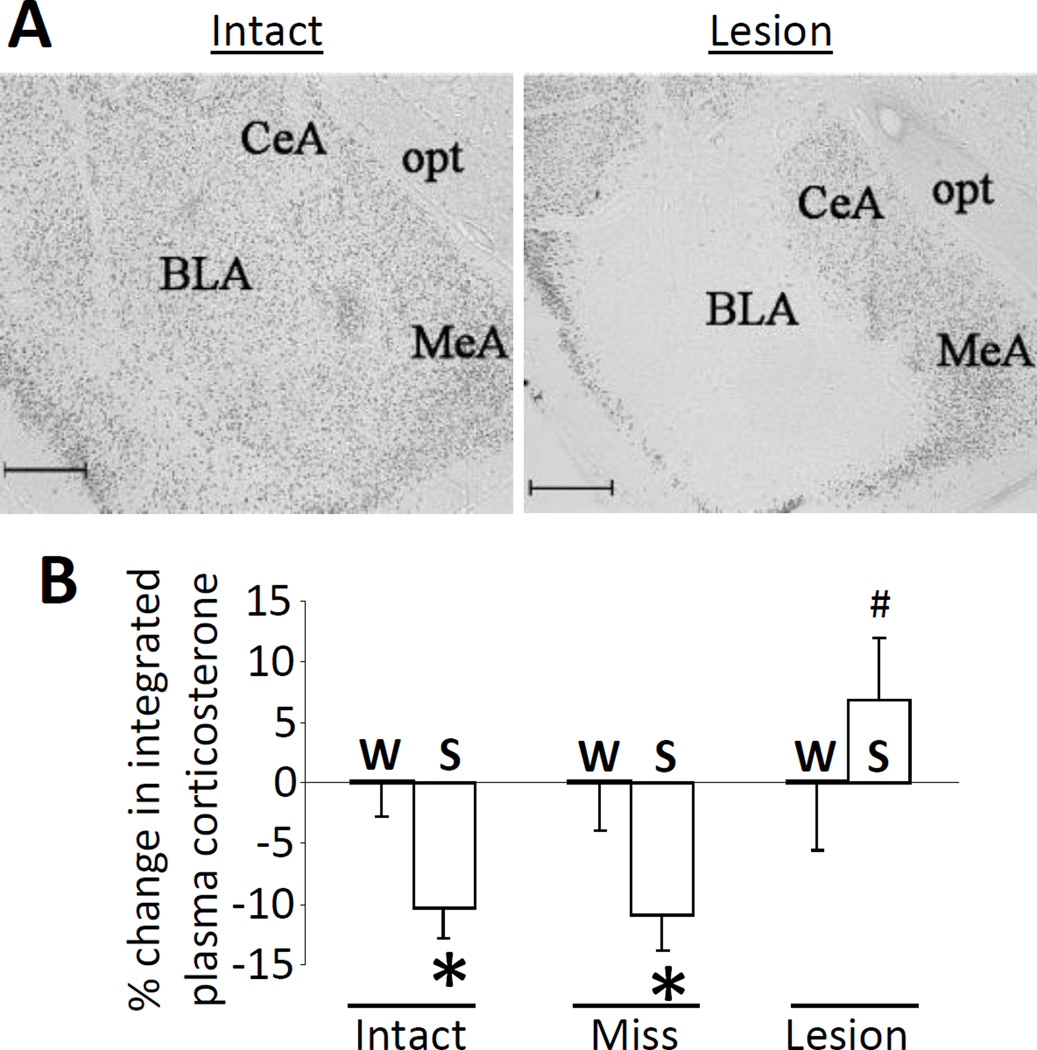Figure 3.
Neuronal activity in the basolateral amygdala (BLA) is necessary for hypothalamic-pituitary-adrenal (HPA) axis-dampening by limited sucrose intake. The plasma corticosterone response to restraint stress was assessed after sucrose (S) vs. water (W) intake in rats with bilateral vehicle-injected, intact BLA (Intact), or bilateral ibotenate infusion that produced lesions that either missed (Miss) or hit (Lesion) the BLA. (A) Representative images of neuron-specific nuclear protein (NeuN)-immunolabeling in the BLA of Intact and Lesion rats. CeA = central amygdala, MeA = medial amygdala, opt = optic tract. Scale bar = 500 um. (B) Sucrose reduced the integrated (area-under-the-curve) plasma corticosterone response to restraint stress (relative to water control rats) in Intact and Miss rats, while this HPA-dampening did not occur in rats with bilateral BLA lesion (Lesion). *p < 0.05 vs. water controls, #p < 0.05 vs. Intact-Sucrose and Miss-Sucrose. Data are shown as mean ± SEM. Reproduced from (Ulrich-Lai et al., 2010).

